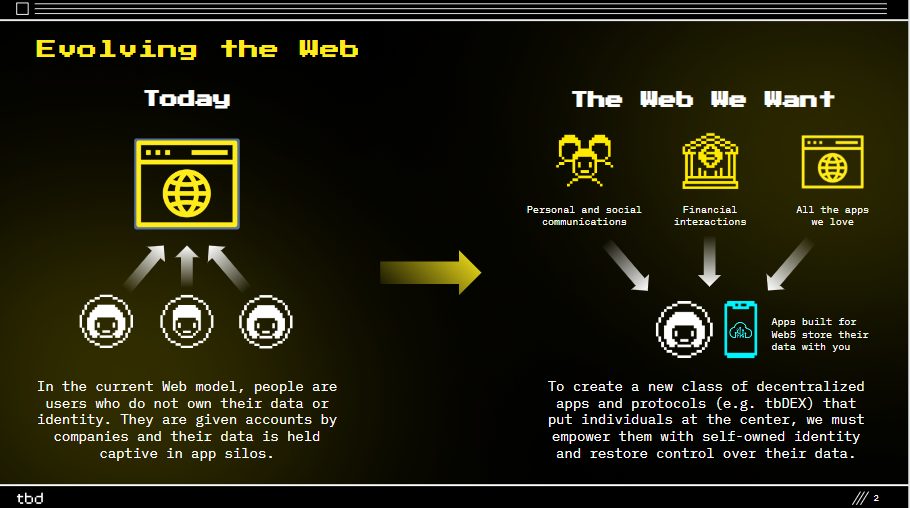TBD, a Bitcoin-focused business unit of Jack Dorsey’s company, Block, has launched “Web5”, or what it calls an “extra decentralised web platform”. Its goal? To decentralise data storage and put users back in control of their identity:
RIP Web3
Dorsey, who has previously called Web3 a “centralised venture capital playground“, clearly has a very different conception of what it means to be decentralised and took to Twitter to express his enthusiasm for the new project:
TBD Lead at Block, Mike Brock, confirmed that Web5 would be nothing like Web3:
This was received favourably by macro investor and renowned Bitcoiner Lyn Alden, who commented:
So, providing actual utility, without unnecessary seigniorage to benefit token VCs while using exit liquidity on retail like web3?
Lyn Alden, Lyn Alden Investment Strategy
Why Web5?
According to TBD’s website, Web5 enables developers to focus on enhancing user experience, while simultaneously enabling users to retain ownership of their data and identity.

To do this, they have leveraged Bitcoin and other decentralised technologies. According to the presentation published by TBD, the concept of Web5 is based on three pillars:
- decentralised identifiers (DIDs) – provide authentication and data routing;
- verified credentials (VCs) – special formats and data models for cryptographic representation and verification of assertions; and
- decentralised web nodes (DWNs) – store data and relay messages exchanged between applications and protocols.
The developers explained that DIDs are generated by users and are not stored by centralised providers or other third parties. Further, the ION layer 2 network can be used as the protocol for the VC. Finally, DWNs will allow ecosystem participants to store and transmit encrypted or clear messages and data.
TBD believes that this will provide an opportunity to create many decentralised applications and protocols based on them:
The combination of DID and DWN creates a secure messaging network that can replace single-purpose protocols (encrypted messaging, photo sharing, and so on) with universal standards for all types of semantic data exchange.
TBD presentation
Consumer and Business Applications Will Drive Adoption
At this stage in the technology adoption curve, most retail investors are likely to find the concept of Web3 confusing, let alone Web5, which on its face appears equally, if not more complex. And who could blame them?
In the end, as was the case for Web2, it’s the consumer and business applications that ultimately drive protocol or technology adoption.
Is Web5 viable? That remains unclear. However, given the quality of leadership and track record of those behind it, not to mention the calibre of those supporting it, investors would be well advised to, at the very least, sit up and take notice:
Disclaimer:
The content and views expressed in the articles are those of the original authors own and are not necessarily the views of Crypto News. We do actively check all our content for accuracy to help protect our readers. This article content and links to external third-parties is included for information and entertainment purposes. It is not financial advice. Please do your own research before participating.
Credit: Source link






















